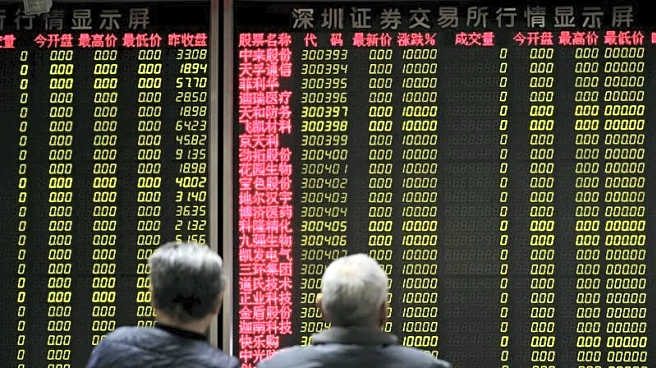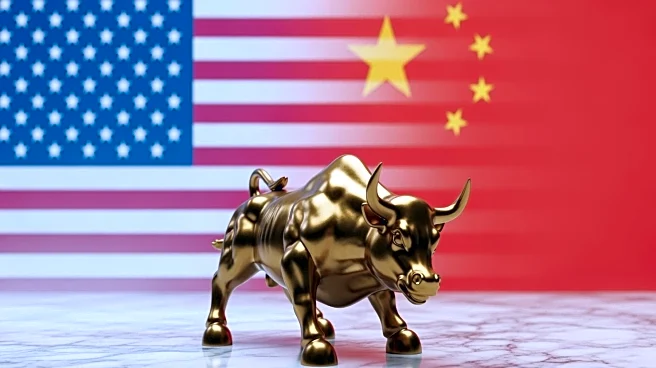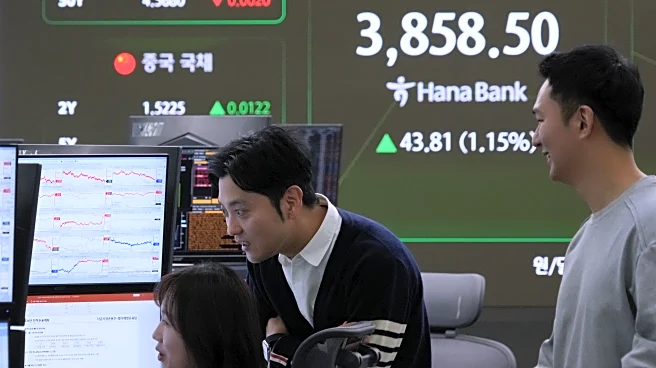What's Happening?
Gold prices experienced a slight decline on Thursday, influenced by a stronger dollar as investors anticipate key U.S. inflation data expected later this week. Spot gold decreased by 0.2% to $4,084.29
per ounce, while U.S. gold futures for December delivery rose by 0.9% to $4,100.90 per ounce. The dollar index increased by 0.2%, making gold more expensive for holders of other currencies. The U.S. Consumer Price Index (CPI) report, delayed due to a government shutdown, is anticipated to show core inflation at 3.1% for September. Investors have largely priced in a 25-basis-point rate cut at the Federal Reserve's upcoming meeting. Gold typically appreciates when interest rates are low, as it reduces the opportunity cost of holding non-yielding bullion.
Why It's Important?
The movement in gold prices is significant as it reflects broader economic trends and investor sentiment regarding inflation and interest rates. A firmer dollar can impact the purchasing power of international investors, affecting demand for gold. The anticipated U.S. inflation data and potential Federal Reserve rate cut are crucial for financial markets, influencing investment strategies and economic forecasts. Gold's performance is often seen as a barometer for geopolitical and economic uncertainties, with its price gains this year driven by such factors. The ongoing trade discussions between President Trump and Chinese President Xi Jinping, along with sanctions on Russia, add layers of complexity to the global economic landscape, potentially affecting commodity markets.
What's Next?
Investors are closely monitoring the upcoming U.S. CPI report and Federal Reserve meeting for further guidance on interest rates and inflation trends. The outcome of President Trump's trade discussions with China could also impact market dynamics, particularly if new agreements or tensions arise. Additionally, the Trump administration's consideration of restricting software-powered exports to China may influence international trade relations and economic policies. These developments could lead to increased volatility in gold prices and broader financial markets, as stakeholders adjust to new economic conditions and geopolitical shifts.
Beyond the Headlines
The potential trade agreement between the U.S. and China, along with sanctions on Russia, highlights the intricate balance of international relations and economic strategies. The consideration of export restrictions to China underscores the ongoing technological and economic competition between the two nations. These actions may have long-term implications for global supply chains, trade policies, and economic alliances. The interplay between geopolitical events and commodity markets like gold illustrates the interconnected nature of modern economies, where political decisions can have far-reaching effects on financial stability and investor confidence.













